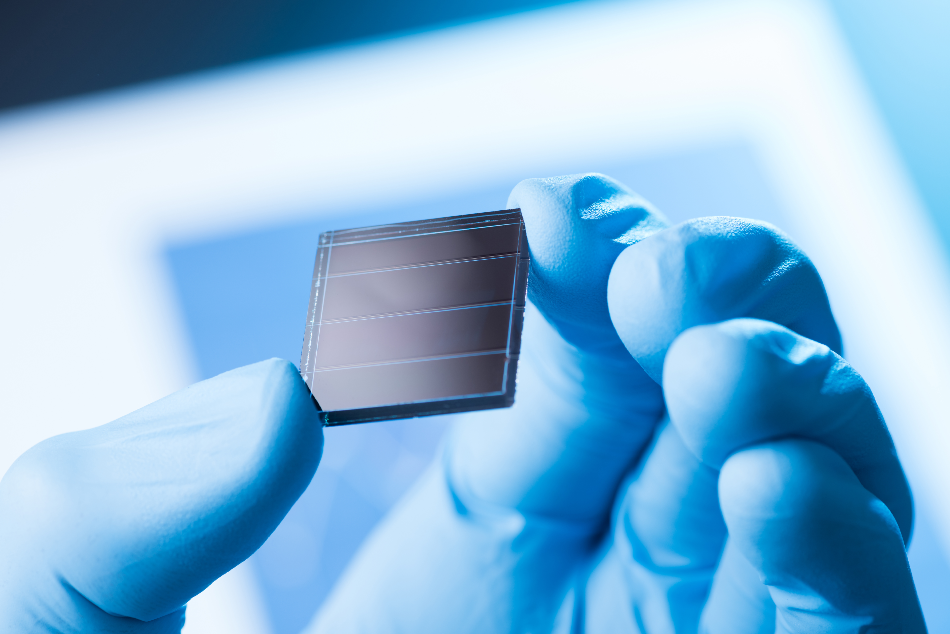Mar 4 2020
Graphene has now been combined with tandem perovskite-silicon solar cells to realize efficiencies of up to 26.3%. This was achieved by Graphene Flagship scientists from the University of Rome Tor Vergata, the Italian Institute of Technology (IIT), and its spin-off, Graphene Flagship Associate Member BeDimensional, in collaboration with ENEA.
 Graphene Flagship researchers successfully combined graphene with tandem perovskite-silicon solar cells to achieve efficiencies of up to 26.3%. Moreover, they envisioned a new manufacturing method that, thanks to the versatility of graphene, allows a reduction in production costs and could lead to the production of large-area solar panels. Image Credit: Fernando Gomollón-Bel (Graphene Flagship).
Graphene Flagship researchers successfully combined graphene with tandem perovskite-silicon solar cells to achieve efficiencies of up to 26.3%. Moreover, they envisioned a new manufacturing method that, thanks to the versatility of graphene, allows a reduction in production costs and could lead to the production of large-area solar panels. Image Credit: Fernando Gomollón-Bel (Graphene Flagship).
Also, a new manufacturing technique proposed by the scientists makes it possible to reduce the costs of production and could result in the production of large-area solar panels. This has been made possible due to the versatile nature of graphene. Graphene-based tandem solar cells have the ability to increase the efficiency of pure silicon by nearly two times.
Due to the laws of physics, the maximum efficiency of silicon solar cells is restricted to 32%. Therefore, researchers have spent several years trying to find out alternative materials, like perovskites and III-V.
But perovskites pose major difficulties, and it is vital to scale up solar panels production to achieve success. Researchers had already combined the benefits of both perovskites and silicon with “tandem cells”, although efficiency, stability, and large-scale manufacturing still appear to be a distant dream.
Soon, graphene came into the picture, and it could be a turning point. The scientists at Graphene Flagship discovered graphene’s potential for harvesting energy, dedicating two different industry-focused “Spearhead Projects” to analyze the viability of graphene-based solar cells.
A paper related to this study was recently published in Joule, a reference journal in the energy research field, and is yet another evidence that graphene and associated layered materials that will allow the commercialization of low-cost and more efficient large-area solar panels.
Our new approach to manufacture graphene-enabled tandem solar cells provides a double advantage. First, it can be applied to enhance all the different types of perovskite solar cells currently available, including those processed at high temperatures.
Aldo di Carlo, Study Lead Author and Researcher, University of Rome Tor Vergata
“But more importantly, we can incorporate our graphene using the widespread 'solution manufacturing methods, key to further deploy our technologies industrially and deliver large-surface, graphene-enabled solar panels,” added di Carlo.
This innovative approach proposed in the context of the Graphene Flagship is the first step toward the development of tandem solar cells delivering an efficiency higher than the limit of single junction silicon devices. Layered materials will be pivotal in reaching this target.
Francesco Bonaccorso, Study Co-Author and Co-Founder, BeDimensional
According to Emmanuel Kymakis, Energy Generation Work Package Leader at Graphene Flagship, “There are some compatibility issues that have to be tackled before the full exploitation of the perovskite-Si tandem PVs concept. This pioneering work demonstrates that the integration of GRMs inks with on-demand morphology and tuneable optoelectronic properties in a tandem structure, can lead to high-throughput industrial manufacturing.”
Graphene and related materials improve the performance, stability and scalability of these devices. The stacked silicon-perovskite configuration will act as the foundation of the new Graphene Flagship Spearhead Project GRAPES, in which a pilot line fabrication of graphene-based perovskite-silicon tandem solar cells will take place, paving the way towards breaking the 30% efficiency barrier and a significant decrease on the Levelized Cost of Energy.
Emmanuel Kymakis, Energy Generation Work Package Leader, Graphene Flagship
Source: http://graphene-flagship.eu/